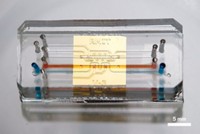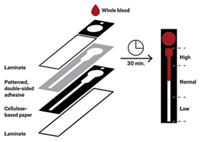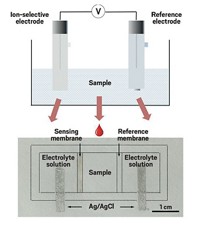Advertisement
Grab your lab coat. Let's get started
Welcome!
Welcome!
Create an account below to get 6 C&EN articles per month, receive newsletters and more - all free.
It seems this is your first time logging in online. Please enter the following information to continue.
As an ACS member you automatically get access to this site. All we need is few more details to create your reading experience.
Not you? Sign in with a different account.
Not you? Sign in with a different account.
ERROR 1
ERROR 1
ERROR 2
ERROR 2
ERROR 2
ERROR 2
ERROR 2
Password and Confirm password must match.
If you have an ACS member number, please enter it here so we can link this account to your membership. (optional)
ERROR 2
ACS values your privacy. By submitting your information, you are gaining access to C&EN and subscribing to our weekly newsletter. We use the information you provide to make your reading experience better, and we will never sell your data to third party members.
Analytical Chemistry
Blood Typing Made Simple
Bioanalysis: Paper-based device spells out blood type
by Bethany Halford
April 30, 2012
| A version of this story appeared in
Volume 90, Issue 18

For anyone who has ever wondered what their blood type is, a new paper-based device will literally write the answer, providing an inexpensive and unambiguous way to determine blood type (Angew. Chem. Int. Ed., DOI: 10.1002/anie.201201822).
The presence or absence of certain antigens on red blood cells determines a person’s blood type. Specific antibodies will react with these antigens and make the red blood cells clump. Researchers led by Wei Shen, of Australia’s Monash University, use an ink-jet printer to apply these antibodies in the shapes of letters A, B, and X as well as a vertical line onto postage-stamp-sized pieces of paper towel. O and rhesus-negative blood types don’t have antigens that react with these antibodies, so the researchers preprint an O in the same spot as the X and a horizontal line intersecting the vertical line on the paper in red waterproof ink.
Place a few drops of blood on the paper, wash it with saline, and in under a minute,
Shen got the idea after seeing the film adaptation of J. K. Rowling’s book “Harry Potter and the Chamber of Secrets,” in which the characters query a diary that responds in writing. Shen realized technology he had previously helped develop could be modified to respond in writing to the question: What’s my blood type?
“The ability to form letters that directly report blood type makes it possible for nonexperts to interpret the results rapidly, which is of particular importance in rapid-response scenarios,” comments John D. Brennan, an expert in bioanalytical chemistry at McMaster University in Ontario. “This method also shows the advantage of implementing simple ink-jet printers to produce paper assays rather than conventional lateral flow printers, which produce only lines.”





Join the conversation
Contact the reporter
Submit a Letter to the Editor for publication
Engage with us on Twitter